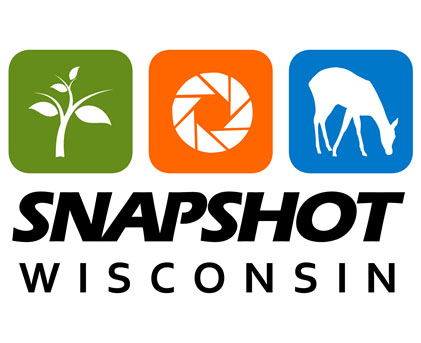Exploring the Plant Side of Citizen Science
In the state of Wisconsin, we are lucky to have so many people who take interest in our natural resources. From the Snapshot Wisconsin project here at the Department of Natural Resources, to university professors conducting environmental research, to individual Wisconsinites, there’s no shortage of people who care.
Before I started working with the Snapshot Wisconsin team, I was fortunate enough to participate in another research project. The goal of the project was to look more closely at the impact that white-tailed deer have on Wisconsin forests when they browse on (or “eat”) sapling trees. My job was to use the Twig-Age method to help collect data across several forest patches in Southern Wisconsin, as well as to build a website to share this new method of data collection with other volunteers who wanted to participate in the research.

The Twig-Age method involves looking at a tree sapling, measuring its height, and counting the terminal bud scale scars along two of its branches. Terminal bud scale scars are what’s left behind on the twig when a bud falls off naturally during the growing process. Picture marking a child’s height on the wall each year. The more bud scale scars a twig has, the longer a twig has been able to grow without being browsed by a deer. We took hundreds of data points in order to paint a picture of what sort of browsing impacts deer were having on these forests.

While I was doing this field work, I found myself surprised by how many different species of trees we have in our forests. Usually when I walk through the woods, I don’t take the time to notice all the different plants around me. I notice the birds and the squirrels, but the plants have always been more of a beautiful backdrop. This research project gave me a stronger appreciation for the diverse vegetation that we have in our forests. I had time to get down at eye-level with these saplings and really look at them. It was like playing the part of a historian by recording the age of their twigs and whether or not a deer had eaten from them before. Each data point collected was a personal interview with a tiny tree.
By the end of the summer we created Our Wisconsin Understory, a citizen science project for monitoring deer impacts. The goal is to collect as much data as possible and to hopefully expand data points across the state. Anyone interested in learning more about the Twig-Age method and collecting data for the project can do so at the Our Wisconsin Understory website.
Top 10 Reasons to Host a Snapshot Wisconsin Trail Camera
Rumor has it that summer is around the corner, which is the perfect time to sign up for a Snapshot Wisconsin trail camera! Do you have access to public land or a private property at least 10 acres in size? A computer with internet? The ability to participate for a least a year? If you answered yes to these questions, congrats – you are already qualified! If you are thinking “But why should I apply?”, here are 10 commonly quoted reasons by our volunteers and project staff:
1. It’s free!
We provide all necessary equipment (including a Bushnell camera), training, technical support and replacements at NO cost! No previous experience is required, we are happy to teach you!

2. Use your trail camera see up close pictures of wildlife.
Feed your curiosity and learn what is on your property and public lands.
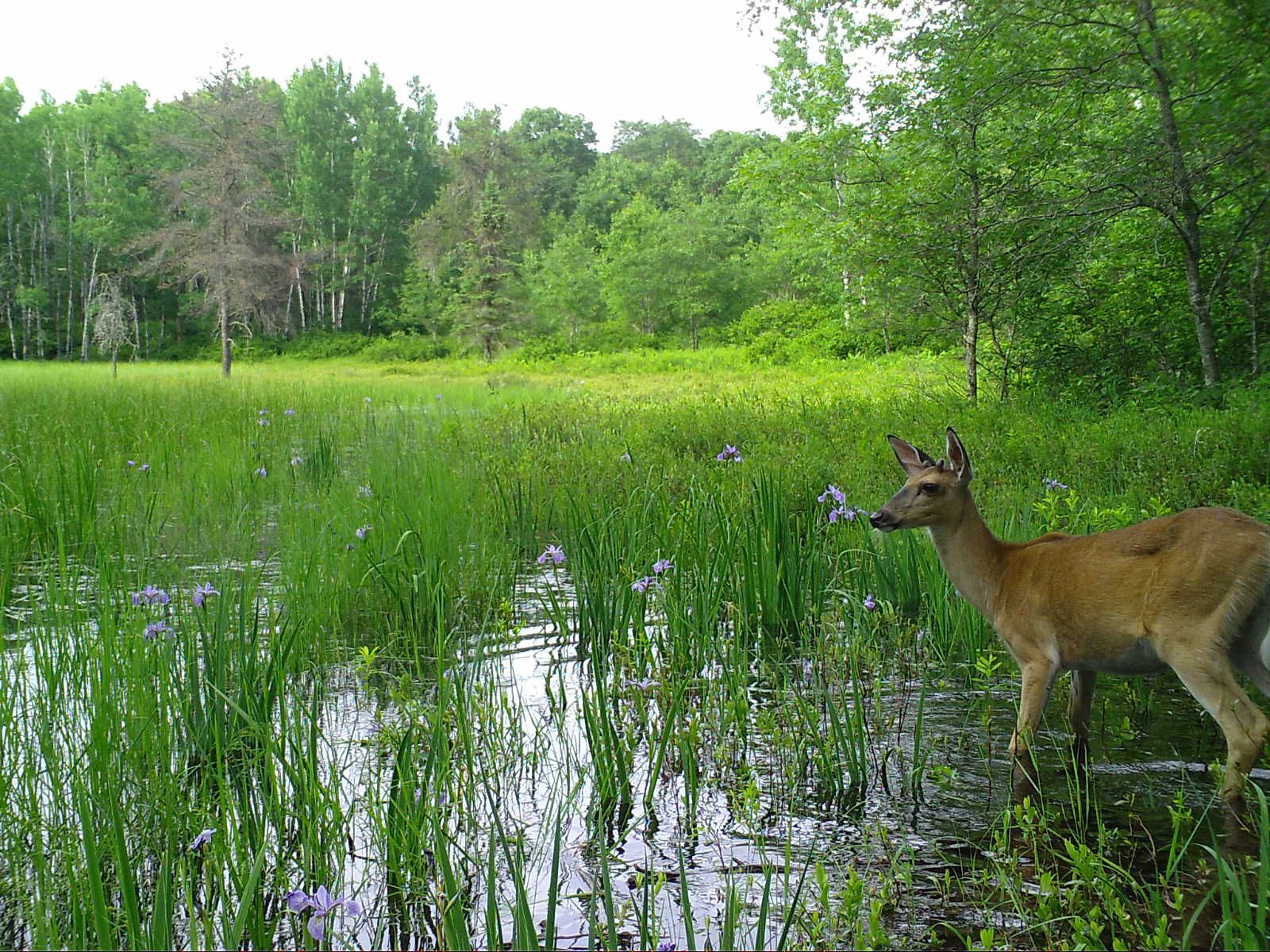
3. Hosting a trail camera is a great excuse to get out into the woods.
And we’ll remind you to check your camera every three months. That way you’ll head outdoors in all seasons and be on track with the program.
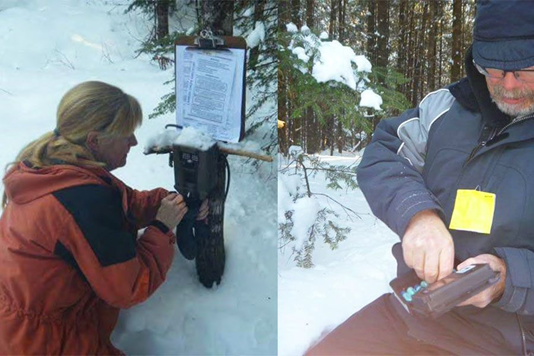
4. Contribute to wildlife monitoring.
Photos collected through Snapshot Wisconsin are turned into important data used for supporting wildlife management decisions at the Wisconsin Department of Natural Resources.

5. Interact with the researchers.
Volunteers interact with the Snapshot Wisconsin research team at various outreach events, both in person and online. We also visit various groups across the state talking about the project and are available for questions on call or email.
6. Be in the know – get regular updates on data collected.
The research team provides regular updates aimed at volunteers – our monthly e-newsletter and blog are chock full of interesting information.
7. Socialize with other volunteers.
Our volunteers meet other citizen science enthusiasts at trainings, outreach and volunteer appreciation events. Discussions at these events can range from how the last hunting season went to secret birding locations, Packer football and so on.
Apart from the events, our Zooniverse forum allows you to interact with more 6500 volunteers from across the globe with the one thing that binds them all – interest in Wisconsin’s charismatic wildlife through the lens of a trail camera.
8. Improve your wildlife identification skills.
We provide a web-interface MySnapshot for volunteers to classify and view their pictures. Our Zooniverse forum is also a way to classify the pictures from across the state.
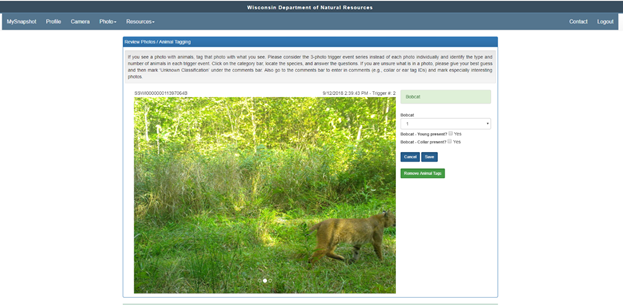
9. Educational outlet for students or nature center visitors.
Hundreds of educators participate in Snapshot Wisconsin. Snapshot Wisconsin is a great avenue to take your class outdoors and to bring the outdoors back into the classroom. Many nature centers also participate in Snapshot Wisconsin and are a great outlet for information on Wisconsin’s wildlife.
10. Provides an opportunity to bridge nature and technology.
Snapshot Wisconsin provides a great opportunity to bridge nature and technology. Trail cameras are non-invasive and providing a wealth of data about the secretive critters of Wisconsin. It’s a great technology for the good, connecting people and nature.
Convinced yet? Signup here: www.SnapshotWISignup.org!
Do you have a few more questions? Contact us at DNRSnapshotWisconsin@Wisconsin.org
Snapshot Wisconsin and the WWOA
 Are you interested in seeing more wildlife on your Snapshot Wisconsin camera? The Wisconsin Woodland Owners Association (WWOA) is a nonprofit organization whose mission is to foster and encourage sustainable management of Wisconsin’s private woodlands.
Are you interested in seeing more wildlife on your Snapshot Wisconsin camera? The Wisconsin Woodland Owners Association (WWOA) is a nonprofit organization whose mission is to foster and encourage sustainable management of Wisconsin’s private woodlands.
Improving the habitat on your lands is not only beneficial for you, but for the wildlife in your woods as well! Members of WWOA receive their quarterly publication of Wisconsin Woodlands filled with ways to improve your woodlands and be stay informed about workshops, conferences and educational field-days conducted by forestry professionals.
For more information, visit www.WisconsinWoodlands.org. To learn about other woodland owner organizations, visit this DNR webpage.
Citizen Science Day 2019
Are you ready to celebrate Citizen Science Day?
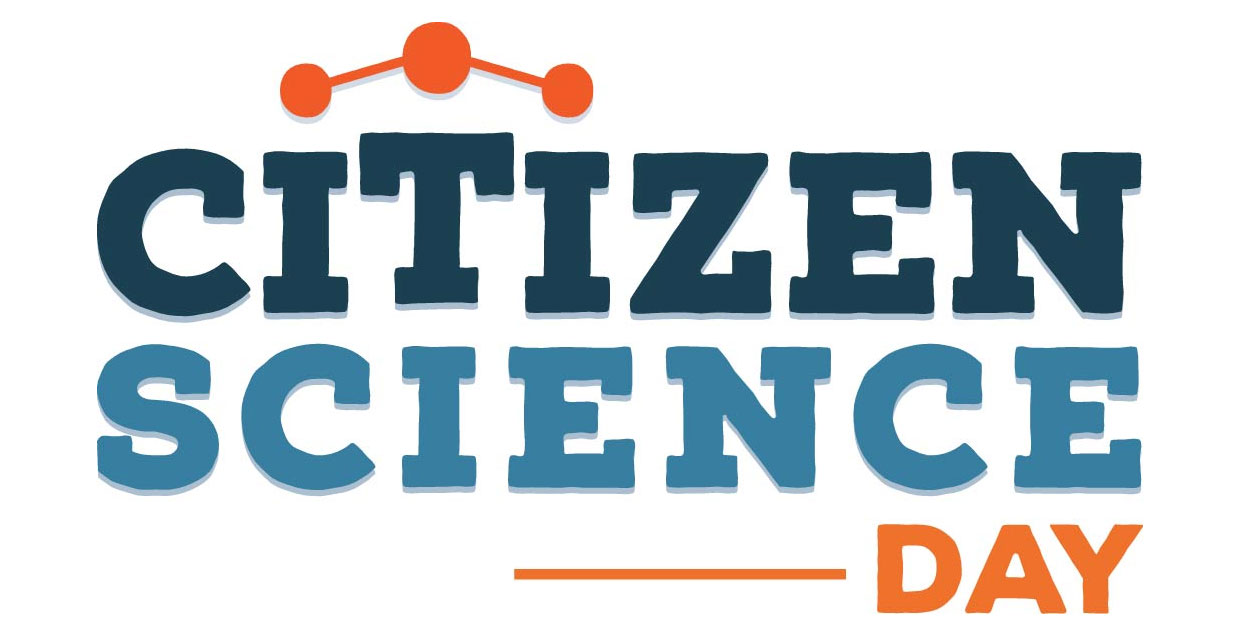
Before we dive into the details, let’s start with what is citizen science? There are many definitions for citizen science, which may also be referred to as community science, crowd-sourced science or volunteer monitoring. The Oxford English Dictionary defines citizen science as,
“Scientific work undertaken by members of the general public, often in collaboration with or under the direction of professional scientists and scientific institutions.”
Citizen scientists partaking in Snapshot Wisconsin monitor trail cameras across to state to gather year-round data about wildlife. Data collected from the project help inform wildlife management decisions at the WDNR, and also engage the public in learning about the state’s natural resources. Snapshot Wisconsin has over one thousand volunteers hosting trail cameras across the state, and hundreds more from around the globe helping to identify the wildlife caught on camera on Zooniverse.
Citizen Science Day is hosted annually to celebrate and recognize the projects, researchers, and dedicated volunteers that contribute to citizen science all over the world. Mark your calendars for April 13th, this year’s Citizen Science Day kick-off! The Citizen Science Association and SciStarter have teamed up to promote events in celebration of citizen science. Are you interested in celebrating Citizen Science Day this year? Check out SciStarter’s project finder to find Citizen Science Day events near you!
You can celebrate citizen science any day of the year by participating in Snapshot Wisconsin, whether you are interested in hosting a trail camera or identifying the exciting critters captured on camera (which can be done from anywhere!)
What Wisconsin Animal Are You?
Some of us like to stay up late and others prefer to snooze, you might be a homebody or always on the move…in case you didn’t realize – animals are the same way too!
Have you ever wondered what Wisconsin animal best embodies your habits? Now is your chance to find out! Take our quiz to find out what Wisconsin animal you are.
This quiz was developed by Sarah Cameron, Christine Anhalt-Depies, and Ally Magnin of the Snapshot Wisconsin Team.
Announcement: Educator Resources Updates!
Riding on the wake of Snapshot Wisconsin’s statewide launch last week (see here), we are excited to announce updates to our educator resources. Snapshot Wisconsin is a fantastic opportunity to engage students in outdoor learning and to teach them about local wildlife. With over 200 educators enrolled in the Snapshot program, we thought it would be beneficial to have a wide-ranging group of lesson plans and resources available.
Lesson Plan Updates
We are excited to announce that our suite of lesson plans is now freely available on our website (see here). These lesson plans, including “Wildlife Detectives” and “Measuring Biodiversity”, have been designed for use by educators whether or not they are hosting a trail camera! Our 10 lesson plans can be used for students of all ages, from pre-k through adulthood, and are an excellent way to incorporate exciting concepts about Wisconsin wildlife into classrooms or nature centers. To fit our lesson plans in with curriculum, we’ve made sure to meet Wisconsin’s Standards for Science.
“When I began using Snapshot Wisconsin and hosting a Trail Cam, I realized how much fun it would be to develop lessons for our local school that has a school forest and is hosting a DNR Trail Cam. The pictures from Snapshot Wisconsin inject excitement into the Wisconsin Science and Math standards. They transform abstract concepts into local experiences.” – Mary from Bayfield County
Additionally, check out our flashcard collection on our lesson plan page. These printable activities are a fun way to learn and practice animal species identification in Wisconsin. Test your skills with beginner through expert level flash cards. Below is an example from our “canid collection”.


NEW: Educator Newsletter
SIGNUP to receive our biannual educator newsletter for lesson plan updates and other classroom resources. This is a newsletter designed specifically for educators and separate from The Snapshot, our monthly volunteer e-newsletter.
Connect with other Educators
On our Zooniverse site, where volunteers from around the world can classify Wisconsin wildlife captured on Snapshot cameras, we have a page dedicated to connecting educators. Visit this talk board to discuss the use of Snapshot Wisconsin in the classroom.
A special thank you to all the educators who reviewed and provided helpful feedback on our lesson plans. YOU make updates to the project like this possible!
Snap-a-thons
What is a Snap-a-thon you may ask? Take a guess from one of three options below.
- A wildlife photography marathon.

Source: Bored Panda
- A classification party with the Snapshot Wisconsin project.

- A marathon for snapping turtles.

Source: A.B. Sheldon, WDNR
If you selected option 2, you are right!
If you read our newsletter or visit our website often, you will notice that the Snapshot Wisconsin project generates a lot of data. We have collected nearly 21 million photos so far. These photos become useful to support wildlife management decisions only when they have a classification tag attached to them and their accuracy is reliable. We have help on hand – more than a thousand trail camera hosts and nearly six thousand Zooniverse volunteers helping us classify these pictures. The idea behind a Snap-a-thon is to spread the word about the project even farther while running a fun competition using the Zooniverse website.
How a Snap-a-thon works is very simple: participants team up or play alone to classify pictures on Snapshot Wisconsin’s Zooniverse page for a set amount of time, typically 20 minutes. Each team is given a checklist of species. During the competition, participants tick off any of the listed species that they see and classify correctly. For uncommon or difficult-to-classify species, participants must raise their hands to get verification from the project team before their classifications are counted. Uncommon species or uncommon occurrences (like multiple species seen together in a photo sequence) also earn participants a higher score. In the end, we tally up the scores and declare a winner. So far, we’ve had 4 such contests and our contestants want to keep classifying even after the time is up. So, it’s pretty addictive!

Snap-a-thon checklist
Pictures from previous Snap-a-thons:

Snap-a-thon at UW-Madison

Snap-a-thon at the International Crane Foundation in Baraboo, Wisconsin
If you’d like to host your own Snap-a-thon, drop us an email at DNRSnapshotWisconsin@wisconsin.gov and we’ll provide you with resources!
Celebrate Citizen Science Day!
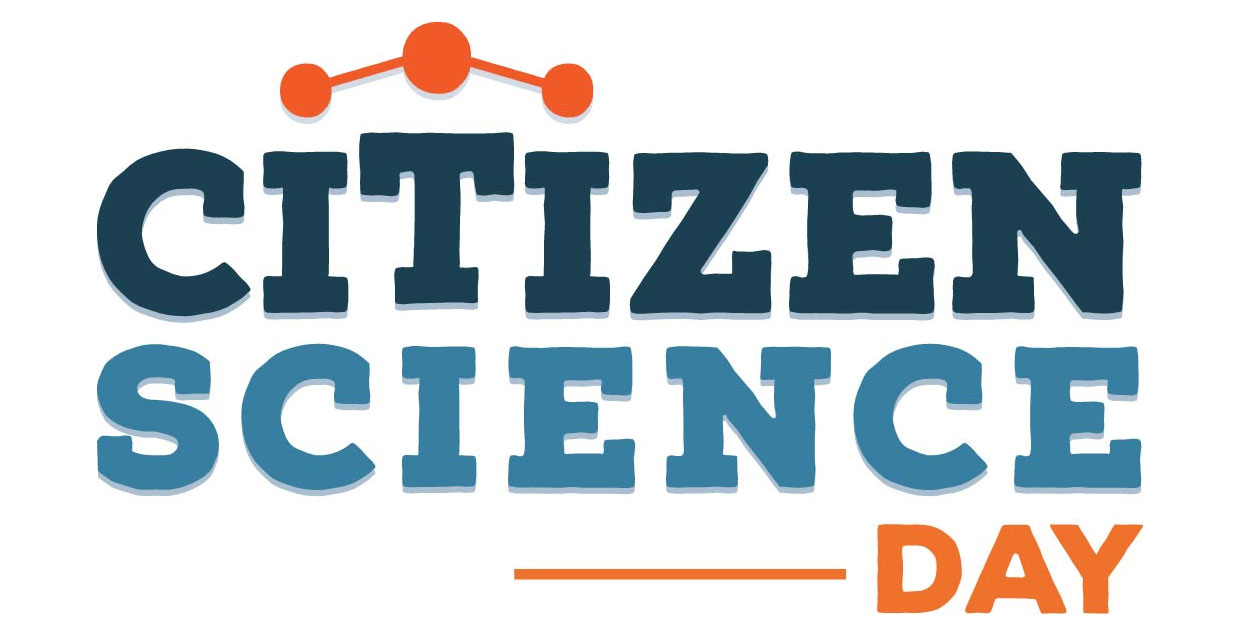 Citizen science invites you to contribute to scientific research no matter where or who you are! For the Snapshot Wisconsin project, citizen scientists deploy and monitor trail cameras and classify photos on Zooniverse. We’d like to take the opportunity to acknowledge our hardworking citizen scientist volunteers and promote Citizen Science Day 2018.
Citizen science invites you to contribute to scientific research no matter where or who you are! For the Snapshot Wisconsin project, citizen scientists deploy and monitor trail cameras and classify photos on Zooniverse. We’d like to take the opportunity to acknowledge our hardworking citizen scientist volunteers and promote Citizen Science Day 2018.
On April 14th, the Citizen Science Association kicked off a month-long extravaganza to promote citizen science. Citizen science is an incredible opportunity for the public to contribute to a wide array of science projects, from air and water monitoring, galaxy identifying and wildlife science. To see a calendar of the hundreds of events happening around the world for Citizen Science Day, check out this link.
The Wisconsin Citizen Based Monitoring Network is another great resource to find citizen science projects in Wisconsin. Check out the events list for ways to become involved.
Taylor’s Fisher Frenzy

An inquisitive fisher plays around with a non-invasive sampling box.
Before joining the Snapshot crew, I worked on a long-term fisher (Pekania pennanti) monitoring project in a beautiful section of Northern California, called the Klamath-Siskiyou eco-region.
Our study focused on one of two endemic populations of fishers on the West coast found in Northern California and Southern Oregon. Fisher populations declined in the 1800s and early 1900s due mainly to trapping and habitat loss. This study was undertaken 11 years ago in response to a petition to list the fisher as a federally endangered species (which was ultimately overruled).
The goals of the project are to better understand the size and robustness of the western fisher population, explore species interactions between meso-carnivores (such as gray fox and ringtail), and investigate fisher responses to wildfires. It’s a very dynamic and exciting project to work on, with lots of valuable questions to explore.

The red X marks the location of our study area within the fisher’s historical and current range.
We used baited, corrugated plastic boxes at 100 historical locations to track our fisher populations. The boxes were fitted with a metal track plate covered in contact paper and ink, along with a glue strip that caught hair from critters passing through the box.

An example of a fisher paw print compared to my hand. Tracks of fisher, gray fox, spotted skunk, ringtail, and other species were used to calculate occupancy estimates. Hair samples were used to calculate fisher density throughout the study area.
Every day for three months, my co-worker and I would set off into the woods to collect track plates and hair snares. This usually meant 10-12 hour days of driving around the Klamath National Forest, punctuated by steep hikes to retrieve samples in the forest.

The Klamath-Siskiyou eco-region has one of the highest diversities of conifers in the world. The area is marked by steep, rugged terrain and deep, river gorges.
Even though we never outright saw the feisty fishers, we began to expect “visits” from them at our boxes. We collected tracks and hair from the same boxes every week. The fishers certainly appreciated the chicken and cat food we left as bait for them! Our weekly box checks became like meeting up with old friends. At one site, I collected a female’s tracks and hair every week for two months. She never made a mess of the bait or destroyed the box (which I greatly appreciated)!
All in all, I had a terrific experience that helped me to understand the importance of non-invasive sampling (i.e., sampling that does not require capturing animals – like the camera trap method used in Snapshot Wisconsin)!
If you are still curious about the non-invasive sampling boxes, check out this video of the box setup.
Vivek’s citizen science and camera trapping experiences
In this post, I’ll be talking a little bit about my experiences with citizen science and camera trapping projects prior to joining Snapshot Wisconsin.
Before I decided to become a wildlife conservation professional, I was involved with citizen science projects as a volunteer. I found pleasure in natural history, making observations and collecting data for scientists. This was my contribution to saving the world, I thought! As a volunteer, I have done large mammal surveys in India, from counting tiger prey species to collecting carnivore scat. I learned a lot from participating in these projects. More than anything else, I think they provided a welcome distraction from my day job as a software programmer *chuckle*.

Here’s a misty morning scene from Nagarhole National Park, while I waited for the survey start time of 6 am.
I was also involved with conservation groups in the Western Ghats landscape of India. One project I am proud of being associated with is the Bisle Frog Watch. Every year citizen scientists congregate at Bisle (a tiny village in the Western Ghats) to learn about amphibian ecology and identify them in the wild under the guidance of researchers. What is heartening is that over a period of 6 years, we have made a checklist of 36 species of amphibians!

A night time frog watching field visit in progress.

A regular feature of our frog watch: a winged gliding frog( Rhacophorus lateralis) perched on a rock.
Apart from mammals and amphibians, I also love bird watching and regularly submit my bird lists to eBird.
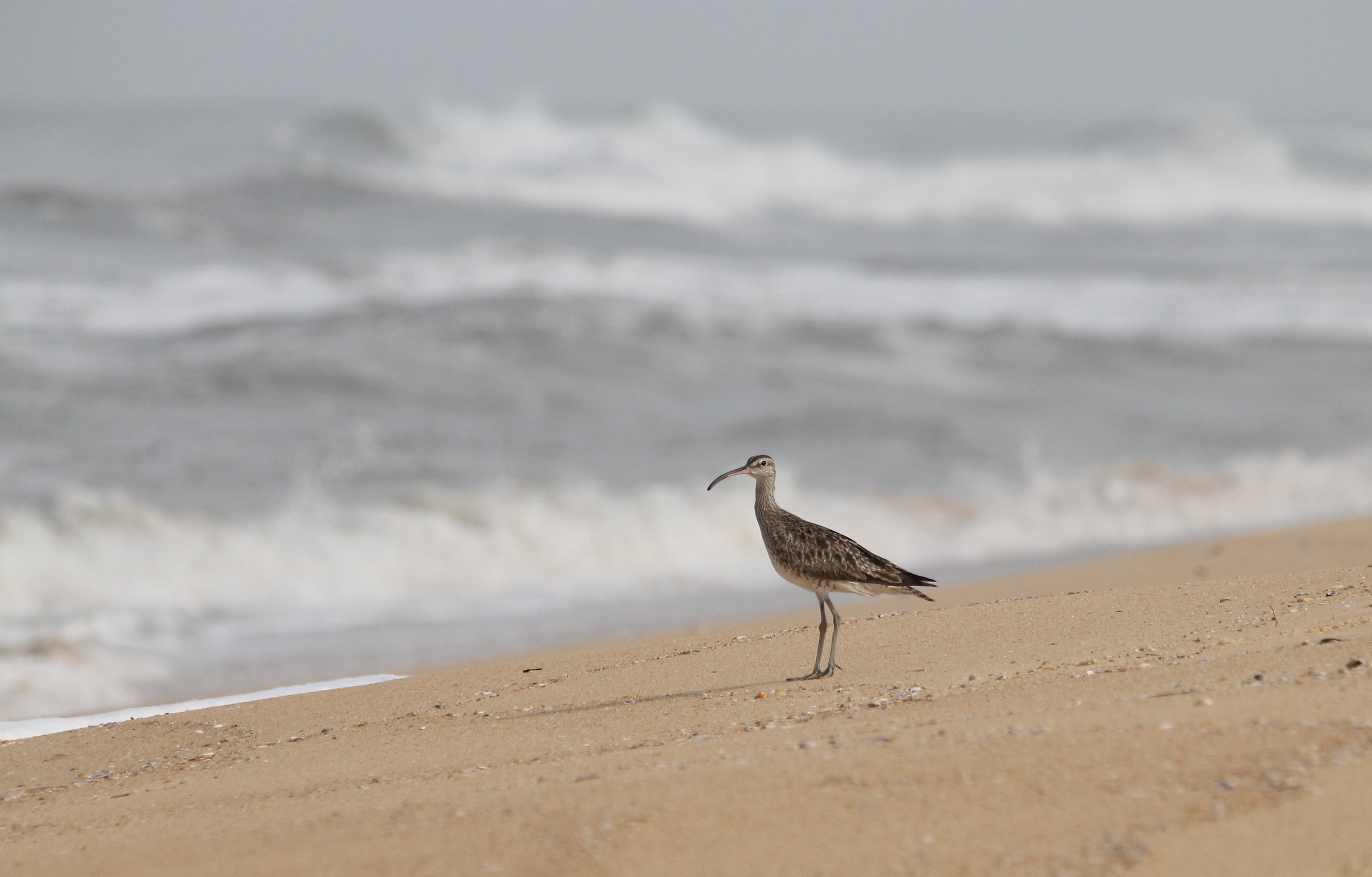
A whimbrel from the Western coast of India.
Some of these experiences with citizen science gave me the confidence that I too can do scientific research. And, that’s also how I decided to pursue a Master’s degree.
Talking about my camera trapping experiences, I worked on a trail camera survey in Ecuador for my Master’s capstone project. I worked with an Ecuador based non-profit called Ceiba Foundation for Tropical Conservation. We set up a total of 16 camera traps on several private properties and nature reserves in the Manabi province of coastal Ecuador.
Whereas the most common species in Snapshot Wisconsin is the white-tailed deer, in my project in Ecuador it was the agouti. (Although white-tailed deer have been recorded in the study site in Ecuador, they are uncommon in those parts of the world.) Whereas in Snapshot Wisconsin we see bobcats, in Ecuador we frequently recorded wild cats like ocelot, margay and jaguarundi.
In fact, I am even leaving an identification challenge for some pictures from Ecuador. Feel free to leave your guesses( along with the picture number) in the comments below. I shall post the answers soon-ish!
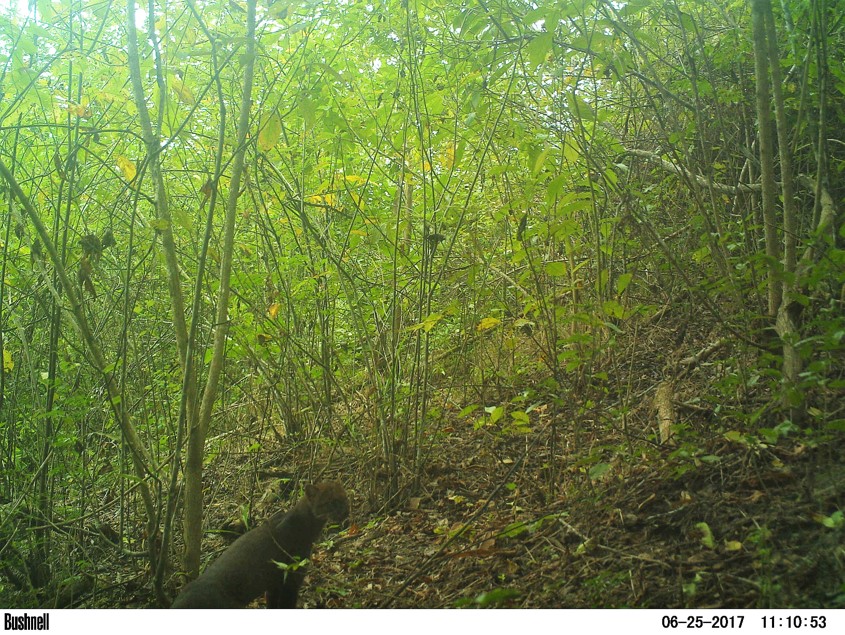
Picture #1

Picture #2

Picture #3

Picture #4
All in all, it is exciting to be working on the Snapshot Wisconsin project – with the many citizen scientists who host camera traps across Wisconsin and many others from around the world classifying pictures – knowing we have something in common.
Picture credits: Frog watch pictures – Deepika Prasad; Camera trap pictures from Ecuador – Ceiba Foundation for Tropical Conservation.







